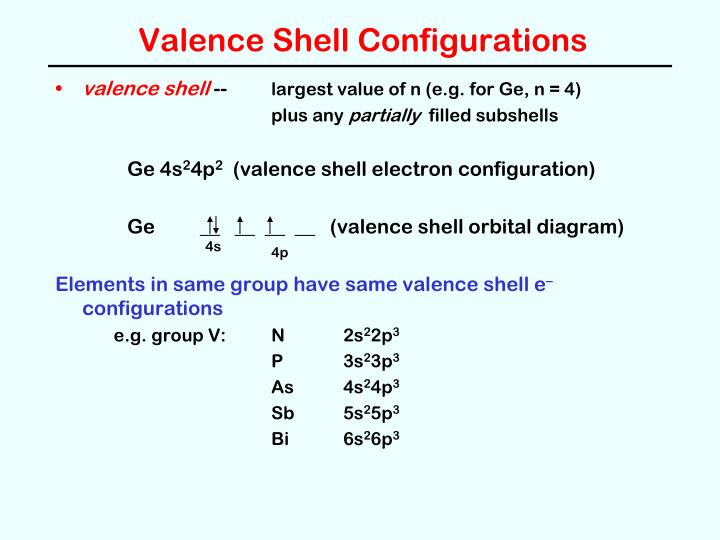
- VALENCE ELECTRONS OF ANTIMONY HOW TO
- VALENCE ELECTRONS OF ANTIMONY SERIAL NUMBER
- VALENCE ELECTRONS OF ANTIMONY PDF
- VALENCE ELECTRONS OF ANTIMONY FULL
VALENCE ELECTRONS OF ANTIMONY FULL
The non-metals on the periodic table all tend to be very close to making it to 8 electons or what we call a full octet. In the next chapter, we will discuss bonding and we will try to follow the octet rule whereby we transfer/donate/take/share electrons between atoms in order to best get to 8 electrons for everybody. The thing is, one of the biggest driving forces in all of chemistry is the desire of the elements to get to this filled valence shell of s 2p 6. row 1 only has to fill the 1s orbital and it is "full" as well (no p electrons there). To be specific, they all have full s and p orbital sets (s 2p 6) at every main level n. That last group of the periodic table has a perfectly filled valence shell. Group 18 on the periodic table (the noble gases) is truly the envy of all the other elements. So we've now got the whole electron configuration thing down, right? Every neutral element has a unique set of electrons and every element has the same number of electrons as there are protons in the nucleus. Here are some words to see how the spacing works Note: this is the entire periodic table's worth of electons (118 of them)īelow is the energy diagram for chromium, Cr 5p = ↿ ↿ ↿īelow is the entire electron energy diagram for antimony, Sb.īecause I couldn't find another place to stash this, here you go.īelow is the entire FILLED electron energy diagram for element 118, oganesson, Og.

Only 3 electrons go into the set - so all three go in as single UNpaired electrons with parallel spin states (all +½ or ↿).

It is the 5p level that is partially full. We know the electron configuration and that all the orbital sets are full (all electrons paired) through 4d. It illustrates the rules of filling.Īnswer: THREE. Its an Electron Energy Diagram (Aufbau Filling Order).īelow is an animated gif showing the proper filling for the 2nd row of the periodic table.
VALENCE ELECTRONS OF ANTIMONY PDF
Here is a nice pdf for you to use to practice dropping in electrons (arrows) in the right order.
VALENCE ELECTRONS OF ANTIMONY HOW TO
Once you memorize and can use the periodic table to help you get the correct order of orbitals, you then need to know how to fill those orbitals. Next thing to remember is how many electrons go into each orbital set and also the ordering of spin within a set. Oh my, how are you going to remember all that? Well, the best way to memorize the aufbau filling order is to use a periodic table and know how the orbitals "fit" the table. Here is the order of filling for all the orbitals in the atom.ġs 2s 2p 3s 3p 4s 3d 4p 5s 4d 5p 6s 4f 5d 6p 7s 5f 6d 7p We will completely fill a lower level of energy before we advance to the next higher level. Pour water in a bucket and it fills from the bottom up - same idea. The aufbau principle tells us to "build up" from the bottom of the energy well to the top.
VALENCE ELECTRONS OF ANTIMONY SERIAL NUMBER
NO duplicates! It's like a serial number for electrons, except we use n, ℓ, m ℓ, and m s. Phenom., 1980, 21, 275.The Pauli exclusion principle says that all electrons in an atom have to have a unique set of quantum numbers. Mårtensson, "Core-Level Binding Energies in Metals," J. Lide, (Ed.) in Chemical Rubber Company handbook of chemistry and physics, CRC Press, Boca Raton, Florida, USA, 81st edition, 2000. Ley, Eds., Photoemission in Solids I: General Principles (Springer-Verlag, Berlin) with additional corrections, 1978. Burr, "Reevaluation of X-Ray Atomic Energy Levels," Rev. They are tabulated elsewhere on the WWW (reference 4) and in paper form (reference 5). The data are adapted from references 1-3. I am grateful to Gwyn Williams (Jefferson Laboratory, Virginia, USA) who provided the electron binding energy data.


The binding energies are quoted relative to the vacuum level for rare gases and H 2, N 2, O 2, F 2, and Cl 2 molecules relative to the Fermi level for metals and relative to the top of the valence band for semiconductors. All values of electron binding energies are given in eV. 1967, 47, 1300.Įlectron binding energies Electron binding energies for antimony. These effective nuclear charges, Z eff, are adapted from the following references: Effective nuclear charges for antimony 1s


 0 kommentar(er)
0 kommentar(er)
